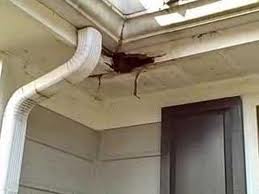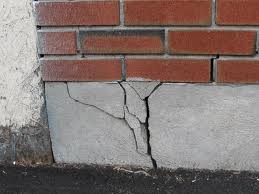Don't Put These Off: Five Home Repairs Not to Postpone
publication date: May 5, 2009
If your budget is squeezed, you might be tempted to put off fixing your home until your financial situation improves or the economy rebounds. But some problems, if left unchecked, can lead to far more costly repairs down the road and might even compromise your family's health.
The trouble signs are easy to spot, provided homeowners know what to look for. What's more, contractors aren't as busy now, so they're likely to be more flexible on price. Consumer Reports identified the five biggest red flags of home maintenance, and offers advice on how to deal with them:
- Runaway rainwater. Gutters, downspouts, and leader pipes collect rainwater and channel it away from the house. In very wet regions, leaders should extend at least five feet from the house. Check the entire gutter system seasonally for proper pitch and for clogs, corrosion, broken fasteners, and separation between connections and where gutters meet the fascia board. The soil around the foundation should slope away from the house at least one inch per foot for six feet or more. Note that soil can settle over the years (or be dug out by ground dwelling critters) and you may need to add soil around your home. If you have planting beds along the foundation, make sure the grading of the bed, its edging, or the edge of the lawn isn't keeping water from draining away from the house.
- Roof and siding. Roofs are the most vulnerable to water infiltration, given their exposure to the elements and the laws of gravity. On a sunny day, use binoculars to spot cracked, curled, or missing shingles, which are signs that the roof is near its end of life. Also check flashing around chimneys, skylights, and roof valleys, and the rubber boots around vents for cracks. Siding is also susceptible to leaks, especially where it meets windows and doors. A $5 tube of caulk might save you thousands of dollars in structural repairs. Adding attic insulation and sealing gaps around pipes, and ducts into the attic might help prevent future damming and lower your heating and cooling bills.

- Pest infestations. Termites and carpenter ants gravitate to moist soil and rotting wood, another reason to make sure your gutters are in good shape and soil around your foundation is graded properly. Also keep mulch, firewood, and dense shrubbery away from your foundation. Once termites infiltrate a home, they can bore through the structure in a few short years. To detect termites, probe the sill plate (also called a mudsill) that sits on top of the foundation with a screwdriver to check for rotted wood. To check for carpenter ants, look for piles of sawdust along baseboards. Termites also shed wings along windowsills, walls, and other entry points. Consider having an inspector come out every 2-3 years.
- Mold and mildew. Even houses in arid climates aren't immune. Hot outdoor temperatures can drive even small amounts of water trapped in the structure to condense on colder interior surfaces, leading to mold. Check under carpets and around windows for visible mold or mildew. Also remove cover plates for cable-TV, phone, and Internet connections, and use a flashlight to peer behind walls and wallpaper for mold. If indoor mold covers less than 10 square feet, treat it with a homemade solution of one cup chlorine bleach per gallon of water. Be sure to don an N-95 disposable respirator, goggles, and heavy-duty gloves. Professional remediation may be needed for larger outbreaks, if the ventilation system is contaminated, or if an allergy sufferer lives in the home. Musty odors, dank air, and family members with chronic runny noses are warning signs.
- Foundation cracks. Some cracks are harmless, but others can mean trouble. Cracks of ¼ inch or more, even vertical ones, can be a problem. Mark smaller cracks with tape and monitor their progress over the coming months. Also be on the lookout for horizontal cracks or bulging or buckling. Along with expanding cracks, those conditions require the attention of a structural engineer.




